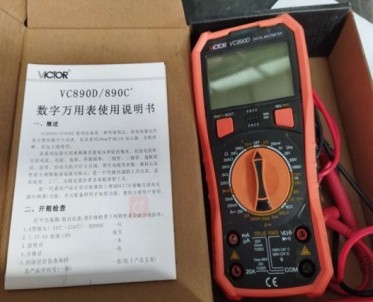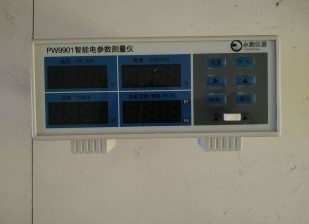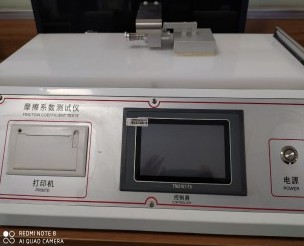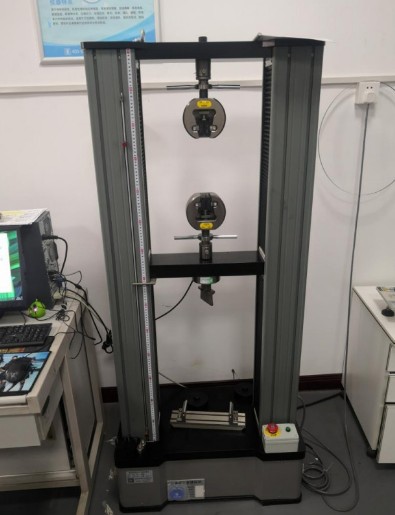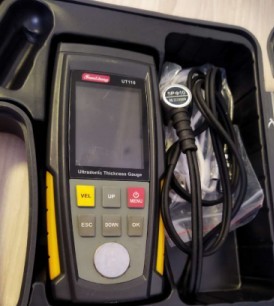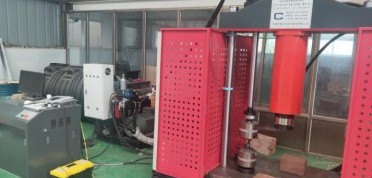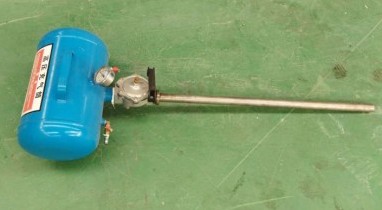电气间隙检测标准相关信息
GB/Z 37754-2019 关于确定不超过2 mm距离的电气间隙和爬电距离的指南 对影响参数进行研究的试验结果
简介:
信息:ICS:29.080.30 CCS:K30 发布:2019-06-04 实施:2020-01-01
KS C IEC 60664-5-2005 低压系统内设备的绝缘配合.第5部分:不超过2mm的电气间隙和爬电距离的确定方法
简介:이 규격은 인쇄 기판 및 이와 동일한 구조에서 2 mm 이하의 이격 거리 및 연면 거리를
信息:ICS:29.080.30 CCS:K04 发布:2005-10-06 实施:2005-10-06
GB/T 16935.5-2008 低压系统内设备的绝缘配合.第5部分:不超过2mm的电气间隙和爬电距离的确定方法
简介:GB/T 16935的本部分规定了印制线路板和类似结构件中不超过 2mm 的电气间隙和爬电距离的 尺寸确定方法 , 在这些结构中 , 电气间隙和爬电距离相同且均沿着固体绝缘的表面 , 如第1部分2〉中 6.2所描述的路径 ( 示例1、5和 11) 。本尺寸确定方法比第1部分规定的方法更为精确。但如果不要求精确尺寸 , 第 部分内容可适用。 本部分只能作为一个整体使用 , 不允许从本部分中摘选一条或几条使用 , 也不允许将它们代替第 1部分的相应条款来使用。而且本部分只能与第 1 部分配合使用。当使用本部分确定电气间隙和爬电距离尺寸时 , 应采用全部条款代替第 1 部分给出的相应条款。对于大于 2mm 的电气间隙和爬电间隙以及通用的固体绝缘 , 第 1 部分适用。本部分基于以下准则确定尺寸 :——与微观环境元关的最小电气间隙 ( 见表 2);——适用于污染等级 1 、 2 和 3 的避免由于电痕化而失效的最小爬电距离 ( 见表 4);——避免跨接绝缘表面闪络的最小爬电距离 ( 见表 5) 。本部分规定了一种将未分类的绝缘材料分配到相关的吸水组别的试验方法。
信息:ICS:29.120 CCS:K30 发布:2008-07-16 实施:2009-04-01
KS C IEC 60664-5-2005(2015) 低压系统内设备的绝缘配合第5部分:确定等于或小于2mm的电气间隙和爬电距离的综合方法
简介:
信息:ICS:29.080.30 CCS: 发布:2005-10-06 实施:
GB/T 32350.1-2015 轨道交通 绝缘配合 第1部分:基本要求 电工电子设备的电气间隙和爬电距离
简介:
信息:ICS: CCS: 发布: 实施:2016-07-01
NF F07-124-1/A2-2005 轨道交通.绝缘配合.第1部分:基本要求.所有电气和电子设备的间隙和蠕变距离
简介:
信息:ICS:29.080.01;29.280 CCS:S34 发布:2005-09-01 实施:2005-09-05
DIN IEC/TS 62993-2020 额定电压高于1 000 V AC和1 500 V DC 以及最高 2 000 V AC和3 000 V DC 的设备的电气间隙、爬电距离和固体绝缘要求的确定指南(IEC TS 62993-2017 + COR1 -2018)
简介:This Technical Specification gives guidance to Technical Committees which deal with equipment having a rated voltage up to 2000 V a.c with rated frequencies up to 30 kHz, or a rated voltage up to 3000 V d.c. It applies to equipment for use up to 2000 m above sea level, and provid
信息:ICS:29.080.30 CCS: 发布:2020-12-01 实施:2020-12-01
NF F07-124-1-2001 轨道交通.绝缘配合.第1部分:基本要求.所有电气和电子设备的间隙和爬电距离
简介:
信息:ICS:29.080.01;29.280 CCS:S35 发布:2001-07-01 实施:2001-07-20
T/CEEIA 467-2020 确定额定电压在交流1000V以上至2000V,直流1500V以上至3000V间设备的电气间隙、爬电距离的数值以及对固体绝缘要求的指南
简介:本文件为一些产品标准技术委员会提供了额定电压为交流1?000?V以上至2?000?V,直流1?500?V以上至3?000?V设备的绝缘配合指南。对于额定电压不超过交流1?000?V和直流1?500?V的设备,以及具有较高或较低内部电压的绝缘配合设备,要求见GB/T16935系列。本文件适用于海拔不超过2?000?m的设备,并提供了在高海拔地区使用的指导。本文件规定了设备电气间隙、爬电距离和固体绝缘的安全要求,包括有关绝缘配合的电气试验方法。由于功能绝缘的要求不属于安全要求,因此未作相应规定。本文件不涉及确定以下几种距离:——通过液体的绝缘;——通过除空气以外的气体;通过压缩空气。
信息:ICS:29.020 CCS:D4420 发布:2020-12-01 实施:2020-12-11
GOST R 51330.20-1999 采矿用电气设备.绝缘,漏电路径与电气间隙.技术要求与测试方法
简介:Настоящий стандарт распространяется на рудничное электрооборудрвание и устанавливает технические требования к твердым электроизоляцио
信息:ICS:29.260.20 CCS: 发布:1999 实施:2001-01-01
BS PD IEC/TR 63040-2016 电气间隙和爬电距离特别是小于等于2 mm距离的指南. 研究影响参数的试验结果
简介:
信息:ICS:29.080.30 CCS: 发布:2016-10-31 实施:2016-10-31
CSN 33 0420 Z1-1998 低压电器设备的电气绝缘协调.间隙和爬电距离
简介:Zpracovatel: Elektrotechnick? zku?ební ústav, KONSER I?O 011481, Ing. Lumír Něme?ekTechnická normaliza?ní komise: TNK 22 Elektrotechnické p?edpisyPracovník ?eského normaliza?ního institutu: Ing. Michal K?í?
信息:ICS: CCS: 发布:1998-01-01 实施:
IEC 62497-1:2010+AMD1:2013 CSV 铁路应用.绝缘配合.第1部分:基本要求要求——所有电气设备的电气间隙和爬电距离和电子设备
简介:
信息:ICS:45.060 CCS: 发布:2013-03-28 实施:
ASTM B878-1997(2014) 电气接触和连接件毫微秒间隙检测的标准试验方法
简介: 4.1x00a0;The tests in this test method are designed to assess the resistance stability of electrical contacts or connections. 4.2x00a0;The described procedures are for the detection of events that result from short duration, high-resistance fluctuations, or of voltage variations that may result in improper triggering of high speed digital circuits. 4.3x00a0;In those procedures, the test currents are 100 mA (x00b1;20 mA) when the test sample has a resistance between 0 and 10 x03a9;. Since the minimum resistance change required to produce an event (defined in 3.2.1) is specified as 10 x03a9; (see 1.3), the voltage increase required to produce this event must be at least 1.0 V. 4.4x00a0;The detection of nanosecond-duration events is considered necessary when an application is susceptible to noise. However, these procedures are not capable of determining the actual duration of the event detected. 4.5x00a0;The integrity of nanosecond-duration signals can only be maintained with transmission lines; therefore, contacts in series are connected to a detector channel through coaxial cable. The detector will indicate when the resistance monitored exceeds the minimum event resistance for more than the specified duration. 4.6x00a0;The test condition designation corresponding to a specific minimum event duration of 1, 10, or 50 ns is listed in Table 1. These shall be specified in the referencing document. 1.1x00a0;This test method describes equipment and techniques for detecting contact resistance transients yielding resistances greater than a specified value and lasting for at least a specified minimum duration. 1.2x00a0;The minimum durations specified in this standard are 1, 10, and 50 nanoseconds (ns). 1.3x00a0;The minimum sample resistance required for an event detection in this standard is 10 x03a9;. 1.4x00a0;An ASTM guide for measuring electrical contact transients of various durations is available as Guide B854. 1.5x00a0;The values stated in SI units are to be regarded as standard. No other units of measurement are included in this standard. 1.6x00a0;This standard does not purport to address all of the safety concerns, if any, associated with its use. It is the responsibility of the user of this standard to become familiar with all hazards including those identified in the appropriate Material Safety Data Sheet (MSDS) for this product/material as provided by the manufacturer, to establish appropriate safety and health practices, and determine the applicability of regulatory limitations prior to use.
信息:ICS:17.220.20 (Measurement of electrical and magnetic CCS: 发布:1997 实施:
IEC 62497-1-2010/AMD1-2013 修改件1.铁路设施.绝缘配合.第1部分:基本要求.所有电气和电子设备的间隙和爬电距离
简介:
信息:ICS:45.060 CCS: 发布:2013-03-28 实施:
ASTM B878-1997(2003) 电气接触和连接件毫微秒间隙检测的标准试验方法
简介:The tests in this test method are designed to assess the resistance stability of electrical contacts or connections. The described procedures are for the detection of events that result from short duration, high-resistance fluctuations, or of voltage variations that may result in improper triggering of high speed digital circuits. In those procedures, the test currents are 100 mA (x00B1;20 mA) when the test sample has a resistance between 0 and 10 x03A9;. Since the minimum resistance change required to produce an event (defined in 3.2.1) is specified as 10 x03A9; (see 1.3), the voltage increase required to produce this event must be at least 1.0 V. The detection of nanosecond-duration events is considered necessary when an application is susceptible to noise. However, these procedures are not capable of determining the actual duration of the event detected. The integrity of nanosecond-duration signals can only be maintained with transmission lines; therefore, contacts in series are connected to a detector channel through coaxial cable. The detector will indicate when the resistance monitored exceeds the minimum event resistance for more than the specified duration. The test condition designation corresponding to a specific minimum event duration of 1, 10, or 50 ns is listed in Table 1. These shall be specified in the referencing document. TABLE 1 Test Condition Designations for Specific Minimum Event Durations Test ConditionEvent Duration, min A 1 nanosecond B10 nanoseconds C50 nanoseconds1.1 This test method describes equipment and techniques for detecting contact resistance transients yielding resistances greater than a specified value and lasting for at least a specified minimum duration.1.2 The minimum durations specified in this standard are 1, 10, and 50 nanoseconds (ns).1.3 The minimum sample resistance required for an event detection in this standard is 10 937;.1.4 An ASTM guide for measuring electrical contact transients of various durations is available as Guide B 854.1.5 This standard does not purport to address all of the safety concerns, if any, associated with its use. It is the responsibility of the user of this standard to establish appropriate safety and health practices and determine the applicability of regulatory limitations prior to use.
信息:ICS:17.220.20 (Measurement of electrical and magnetic CCS:K10 发布:1997 实施:
IEC 62497-1-2010+AMD1-2013 CSV 铁路应用.绝缘配合.第1部分:基本要求要求——所有电气设备的电气间隙和爬电距离和电子设备
简介:
信息:ICS:45.060 CCS: 发布:2013-03-28 实施:
PN E08109-1991 低电压系统内的绝缘配合.包括电气设备的电气间隙和爬电距离
简介:Przedmiotem normy s? wskazówki dla Komisji Normalizacyjnych opracowuj?cych normy na urz?dzenia niskiego napi?cia, dotycz?ce okre?lania odst?pów izolacyjnych powietrznych i powierzchniowych w taki sposób, aby w instalacji by?a mo?liwa koordynacja izolacji oraz aby by?a mo?liwa racjonalna koordynacja izolacji mi?dzy ró?nymi aparatami zastosowanymi w takich samych lub ró?nych warunkach.Norma podaje równie? wskazówki dla Komisji Normalizacyjnych dotycz?ce okre?lenia izolacji wewn?trznej.
信息:ICS:0607 CCS: 发布:1991 实施:
IEC 62497-1:2010/AMD1:2013 修改件1.铁路设施.绝缘配合.第1部分:基本要求.所有电气和电子设备的间隙和爬电距离
简介:
信息:ICS:45.060 CCS: 发布:2013-03-28 实施:
TS 1057-1972 空气中爬电距离和电气间隙
简介:
信息:ICS: CCS: 发布:1972-01-01 实施:
IEC 62497-1 AMD 1-2013 轨道交通.绝缘配合.第1部分:基本要求.所有电气和电子设备的间隙及漏电距离
简介:
信息:ICS:29.080.01;29.280;45.020 CCS:S80 发布:2013-03 实施:
CSN 34 0130-1970 爬电距离和电气间隙
简介:Zpracovatel: V?zkumn? a v?vojov? ústav elektrick?ch p?ístroj? a rozvádě??, Brno — Ing. V Burkert.Pracovník ??adu pro normalizaci a mě?ení: Ing. J. Nová?ek
信息:ICS: CCS: 发布:1970-03-18 实施:
IEC 62497-1 Edition 1.1-2013 轨道交通.绝缘配合.第1部分:基本要求.所有电气和电子设备的间隙及漏电距离
简介:
信息:ICS:29.080.01;29.280;45.020 CCS:S80 发布:2013-03 实施:
TB/T 3251.1-2010 轨道交通.绝缘配合 第1部分:基本要求 电工电子设备的电气间隙和爬电距离
简介:本部分规定了轨道交通应用中的绝缘配合,适用于海拔1400m及以下(标称电压交流1000V、直流1500V以上的高压电工电子设备)或海拔2000m及以下(低压电工电子设备)的信号设备、机车车辆设备和地面装置。本部分规定了:设备的电气间隙和爬电距离要求;绝缘配合试验的一般要求。本部分不涉及:通过固体或液体的绝缘距离;通过除空气之外的其他气体的绝缘距离;通过非大气压下的空气的绝缘距离;在极端条件下使用的设备。产品标准应符合本通用标准。
信息:ICS:45.060 CCS:S45 发布:2011-01-12 实施:2011-07-01
IEC 62497-1:2010 铁路应用 - 绝缘协调 - 第1部分:基本要求 - 所有电气和电子设备的间隙和爬电距离
简介:
信息:ICS:45.060 CCS: 发布:2010-02-18 实施:
IEC 62497-1-2010 轨道交通.绝缘配合.第1部分:基本要求.所有电气和电子设备的间隙及漏电距离
简介:
信息:ICS:29.080.01;29.280;45.020 CCS:S04;S35 发布:2010-02 实施:
DIN EN 60664-5-2008 低压系统内设备的绝缘配合.第5部分:测定电气间隙和漏电距离等于或小于2mm的综合方法
简介:
信息:ICS:29.080.30 CCS:K31 发布:2008-05 实施:2008-05-01
IEC 60664-5-2007 低压系统内设备的绝缘配合 第5部分:不超过2mm的电气间隙和爬电距离的确定方法
简介: GB/T 16935的本部分规定了印制线路板和类似结构件中不超过2 mm的电气间隙和爬电距离的 尺寸确定方法,在这些结构中,电气间隙和爬电距离相同且均沿着固体绝缘的表面,如第1部分中6.2 所描述的路径(示例1、5和11)。 本尺寸确定方法比第1部分规定的方法更为精确。但如果不要求精确尺寸,第1部分内容可适用。 本部分只能作为一个整体使用,不允许从本部分中摘选一条或几条使用,也不允许将它们代替第1 部分的相应条款来使用。而且本部分只能与第1部分配合使用。 当使用本部分确定电气间隙和爬电距离尺寸时,应采用全部条款代替第1部分给出的相应条款。 对于大于2 mm的电气间隙和爬电间隙以及通用的固体绝缘,第1部分适用。 注1:等于或小于2 mm距离的限制适用于基本绝缘或附加绝缘,加强绝缘或双重绝缘的总距离可能大于2 mm。 本部分基于以下准则确定尺寸: ——与微观环境无关的最小电气间隙(见表2); ——适用于污染等级1、2和3的避免由于电痕化而失效的最小爬电距离(见表4); ——避免跨接绝缘表面闪络的最小爬电距离(见表5)。 注2:保持足够绝缘电阻的最小爬电距离见表八2。 注3:本部分不适用于比污染等级3或湿度等级3差的微观环境条件。 本部分规定了一种将未分类的绝缘材料分配到相关的吸水组别的试验方法。
信息:ICS:29.080.30 CCS:K04 发布:2007-07 实施:
EN 60664-5-2007 低压系统内设备的绝缘配合.第5部分:不超过2 mm的电气间隙和爬电距离的确定方法
简介:
信息:ICS: CCS: 发布:2007 实施:
NRS 060-2005 额定电压不超过145 kV的电气系统的人身安全间隙实施规程
简介:Covers safety clearances between live parts and objects for rated voltages up to and including 145 kV. The clearances stipulated in this code of practice provide a measure of safety to persons in the vicinity of live parts. Does not cover distances maint
信息:ICS:29.240.20 CCS:K09 发布:2005-11-17 实施:
KS C IEC 60664-5-2005 低压系统内设备的绝缘配合.第5部分:不超过2mm的电气间隙和爬电距离的确定方法
简介:이 규격은 인쇄 기판 및 이와 동일한 구조에서 2 mm 이하의 이격 거리 및 연면 거리를
信息:ICS:29.080.30 CCS:K04 发布:2005-10-06 实施:2005-10-06
北检院部分仪器展示




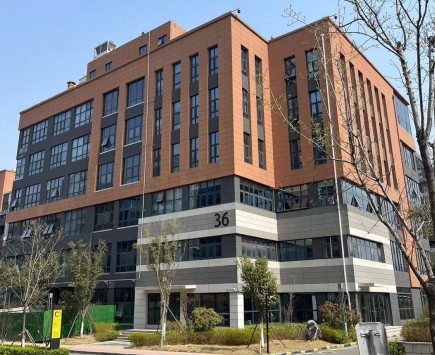 北检(北京)检测技术研究院(简称:北检院),依托科研测试与材料检测重点领域,结合“211工程”和“985工程”建设,面向学校和社会企业开放的仪器共享机构和跨学科检测交叉融合平台。面向企业及科研单位跨学科研究、面向社会公共服务,构建具有装备优势、人才优势和服务优势的综合科研检测服务平台。
了解更多 +
北检(北京)检测技术研究院(简称:北检院),依托科研测试与材料检测重点领域,结合“211工程”和“985工程”建设,面向学校和社会企业开放的仪器共享机构和跨学科检测交叉融合平台。面向企业及科研单位跨学科研究、面向社会公共服务,构建具有装备优势、人才优势和服务优势的综合科研检测服务平台。
了解更多 +
